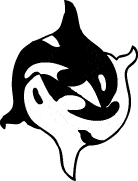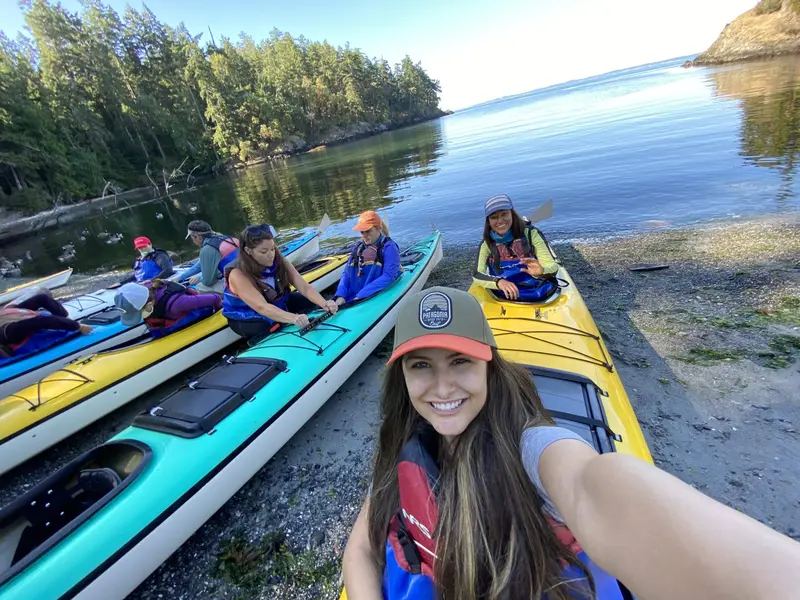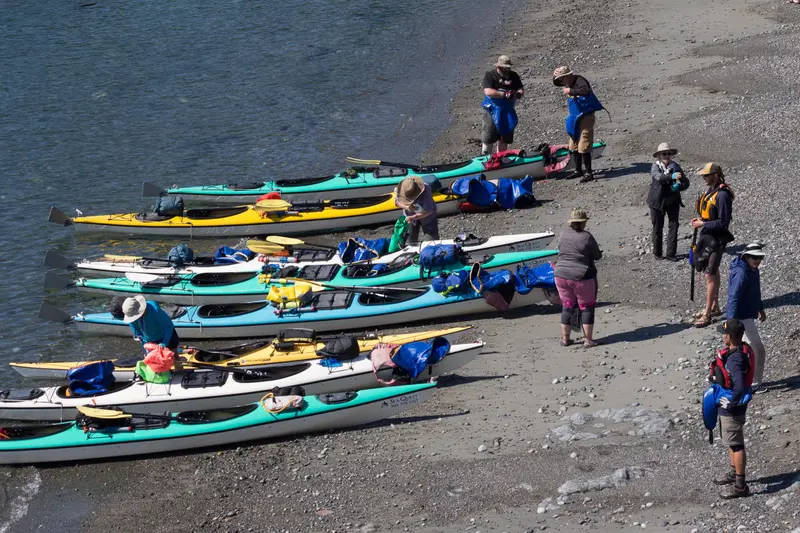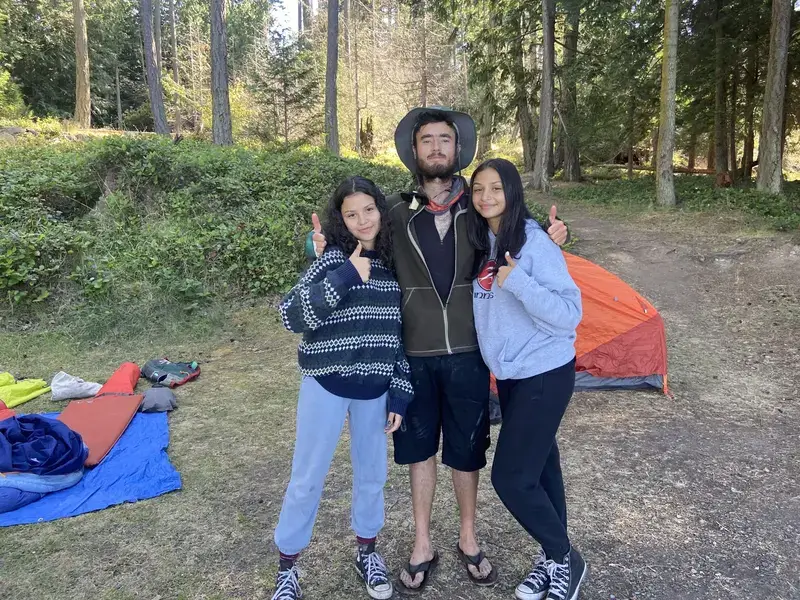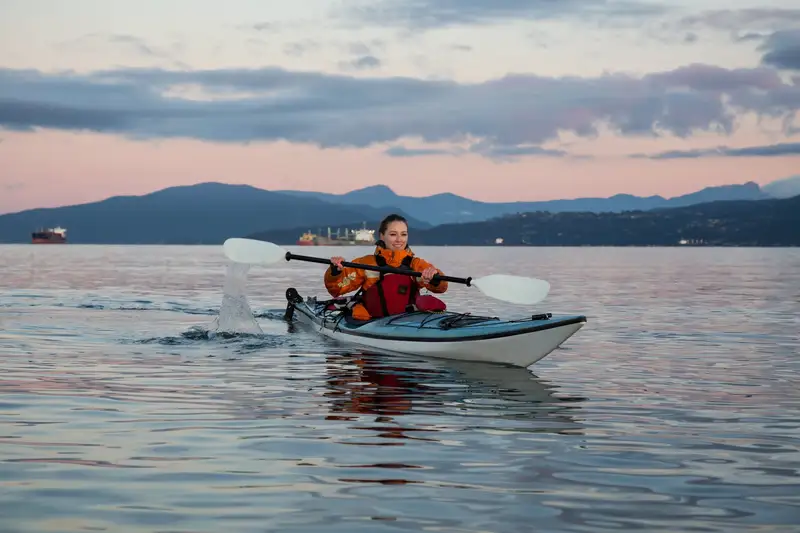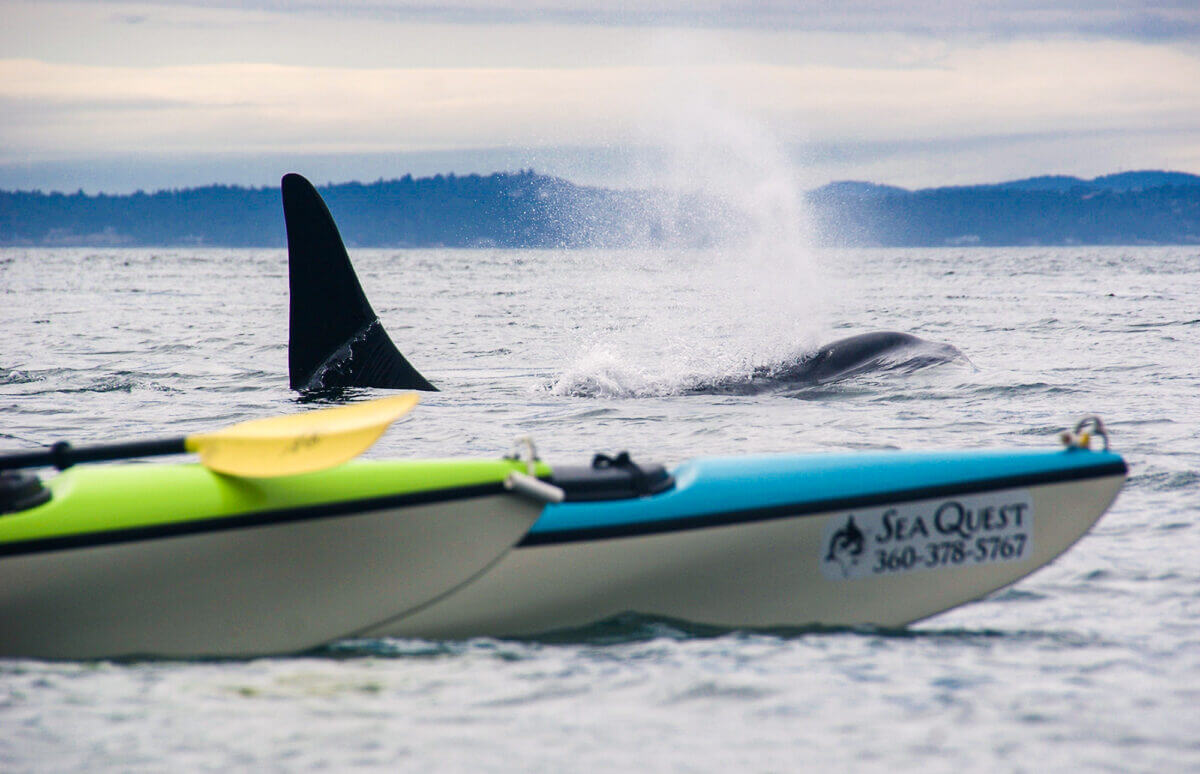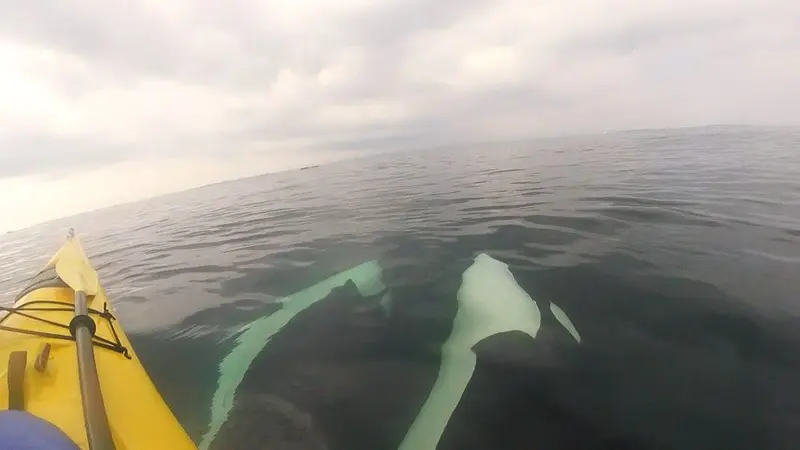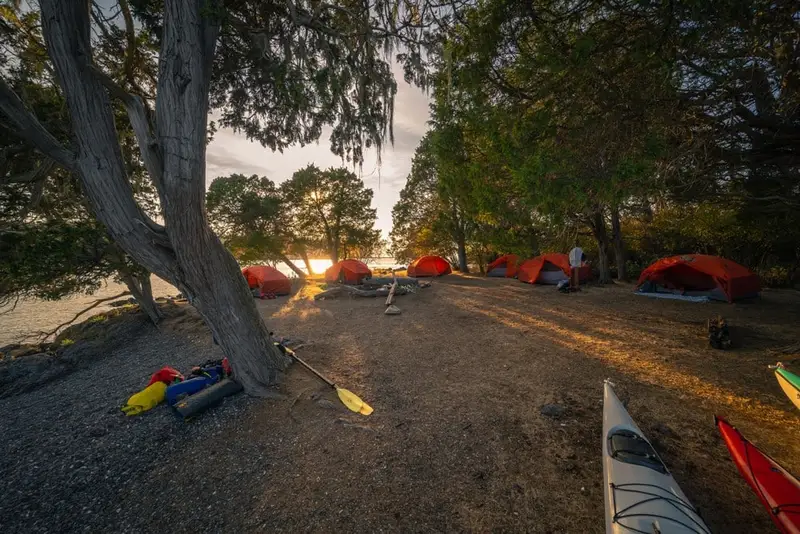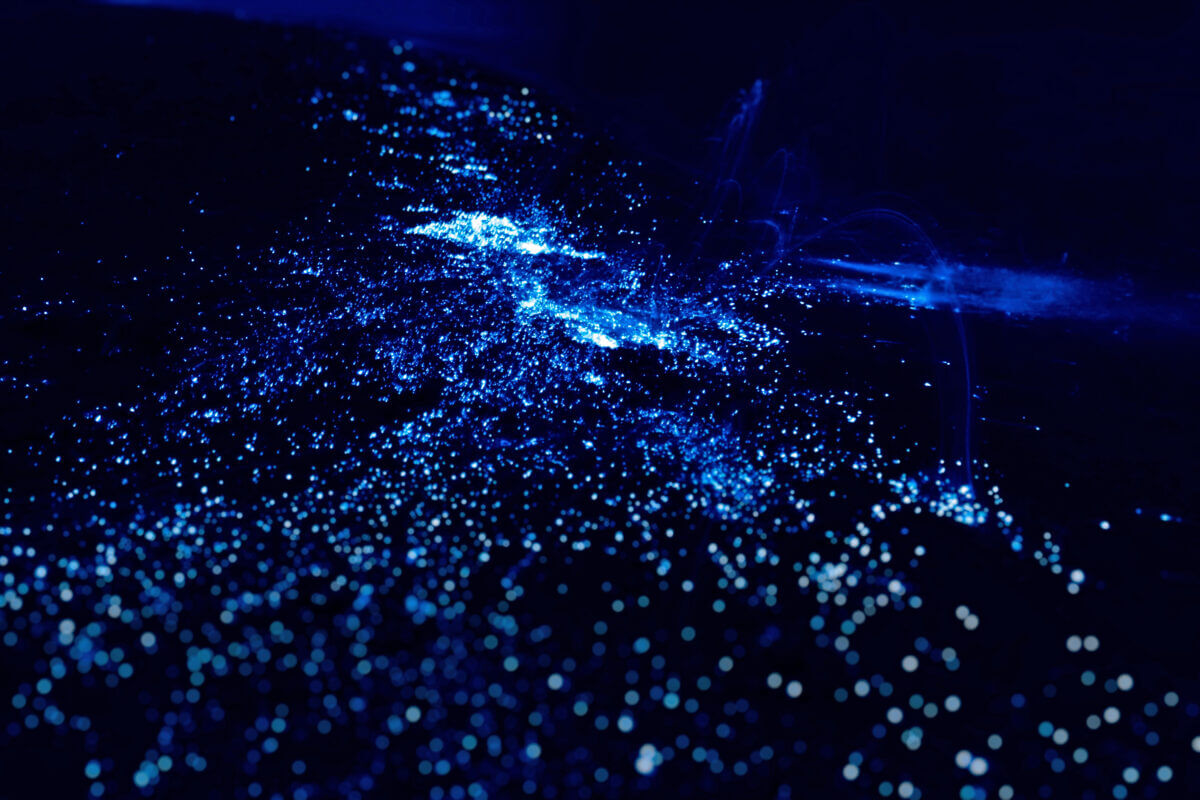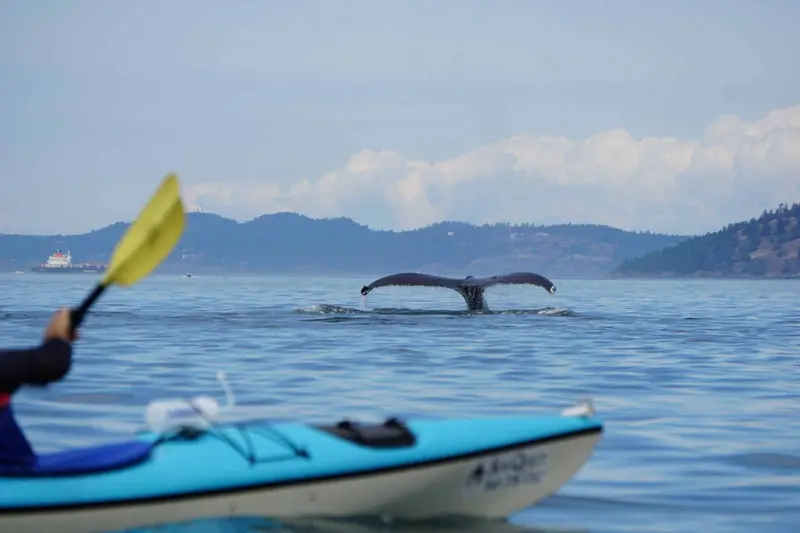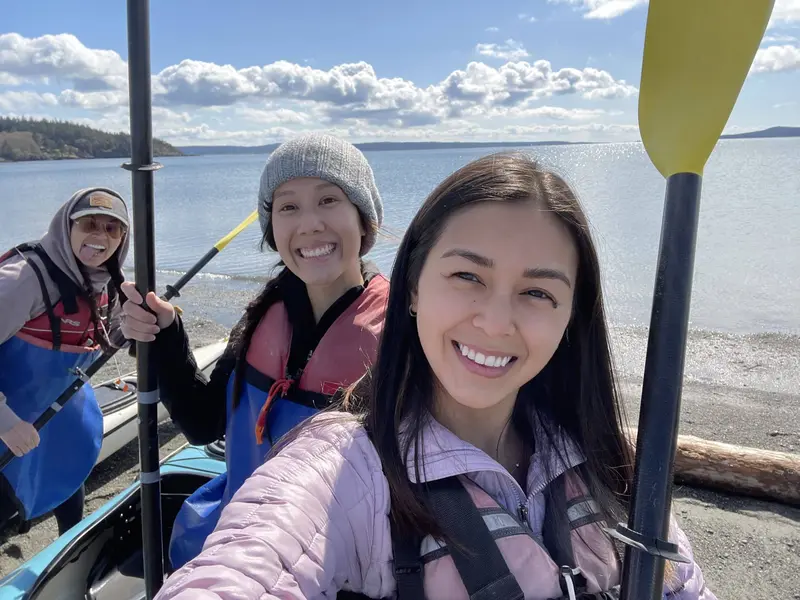What do kayak guides in the San Juan Islands do on their day off? Go kayaking, of course! At the end of June, my fellow sea kayak guides and myself had a couple of days off from our busy guiding schedule in the beautiful Pacific Northwest of Washington. We wanted to make the most of it, so we organized an ambitious kayak trip from our base in Friday Harbor.
Our group consisted of my knowledgeable and handsome fellow sea kayak guides – Peter, Abbot, Alex, Greg, in addition to myself, the lone female. We are a mix of whitewater rafters, biology majors, and ski instructors from all over the country that came together in the San Juan Islands for the summer sea kayaking season. The day of our launch, we threw dry suits, sleeping bags, safety gear, and radios in our guide bags and loaded Tempest and Discovery kayaks on our roof racks. The weather forecast, tides, and current tables were carefully studied, our mileage calculated, and our trip plan was filed with our instructors.
On most days we lead tours for Sea Quest Kayak Tours along the west side of San Juan Island. Our typical day trip route explores scenic Haro Strait and features views of Canadian islands to our west and the snow-capped Olympic Mountains to our south. But the outstanding natural and human history found along San Juan Island’s shore is the real highlight of this route. Kayaking in Haro Strait puts our guests in the heart of orca whale territory. Haro Strait is where the orca whales most frequently hunt and travel in the San Juan Island as they spend the summer months foraging for salmon in Washington. In addition to the orca whales, the west side offers habitat to a variety of other wildlife. Harbor seals, harbor porpoises, and bald eagles are frequently spotted on our trips. During a low tide, we see barnacles, chitons, purple sea stars, and much more clinging to the dark basalt rock of this cliff-like shore.
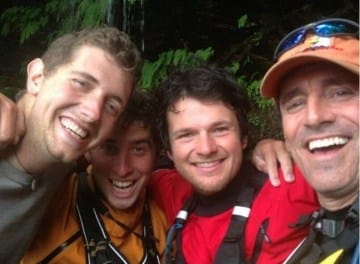
Our guided San Juan kayak tours paddle right past Lime Kiln State Park, the first park in the world created for whale watching. The park has preserved historic lime kilns that were a key part of the San Juan Island economy in the late 1800’s and features a functioning lighthouse and whale research station. Most guests enjoy posing here for a picture with Lime Kiln Lighthouse in the background. Past the lighthouse is Deadman Bay, a popular beach and former haunt of smugglers. As professional guides who frequently paddle this popular west side route, we desired to visit the most remote destination possible for our personal expedition. Our goal became Patos Island, the most isolated jewel in the archipelago, located in the extreme northwest corner of Washington state.
So we launched our kayaks from the north end San Juan Island and headed for the watery border that separates the US from Canada. Our first stop was Sandy Point on Waldron Island, home to a community of independent people pursuing an alternative lifestyle. After a quick stretch of the legs, we hopped back into our kayaks and crossed to Skipjack Island. This uninhabited wildlife refuge obstructed the tidal current and created a small rip current to cross for a quick thrill. Next up was a long open water crossing to Patos Island. In the distance beyond, we could see the skyline of Vancouver, Canada and the snow-capped peaks of both Canadian Coastal Range and North Cascades of Washington. We selected some landmarks to use as in a navigation technique called “site and range” that enabled us to stay on course as we compensated for the strong currents sweeping through the archipelago.
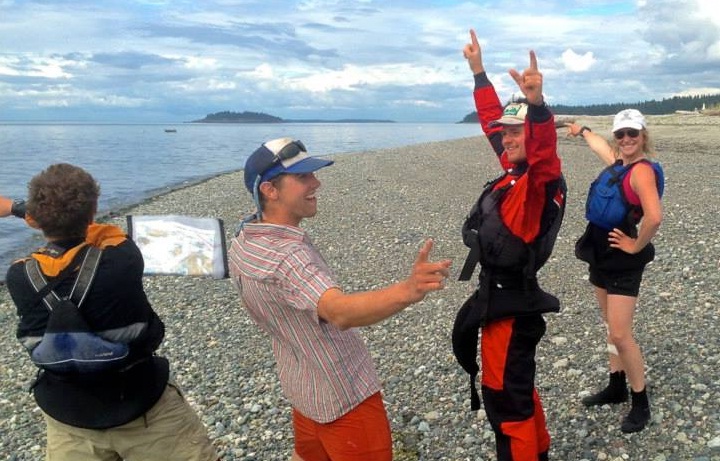
In the middle of this long and silent stretch of the inland sea, where the only sounds were the drips of our paddles, we heard the explosive breath of a whale. Right behind us, a minke whale surfaced twice, spouting mist from its twin blow-holes. After it passed, the five of us turned to each other to talk about this wonderful encounter. Oddly, in the middle of this still blue void, we heard our own voices echoing back to us. Our shouts seemed to bounce off the distant mountains, but in reality they were reflecting off a temperature inversion layer that had formed over the cold water in the still air. This same phenomenon is responsible for bending light into mirages that frequently grace our summer horizons.
We continued paddling and landed in the early evening light on Patos Island. Patos is arguably the most enchanting island in the San Juans. It is remote, uninhabited, and only reached by those with enough curiosity and determination to make the journey. The picturesque lighthouse still works to keep freighters bound for Alaska in their proper lanes. The shoreline of Patos is a tan and orange sandstone, accented by the rich greenery of Douglas-firs and Pacific madrona trees. We choose a campsite with a perfect western view from our cove towards the brilliant summer sunset. After a long day of paddling 15 miles, dinner was the next priority. We combined green peppers, yams, cheese, and black beans into a dish of enchiladas and ate them around a glowing camp fire. The sun sank beneath the horizon and we set our sleeping bags under a tarp to escape the heavy dew. The embers of the fire winked off and soft breezes wafted across our idyllic island, lulling us to sleep after a very satisfying day of sea kayaking.
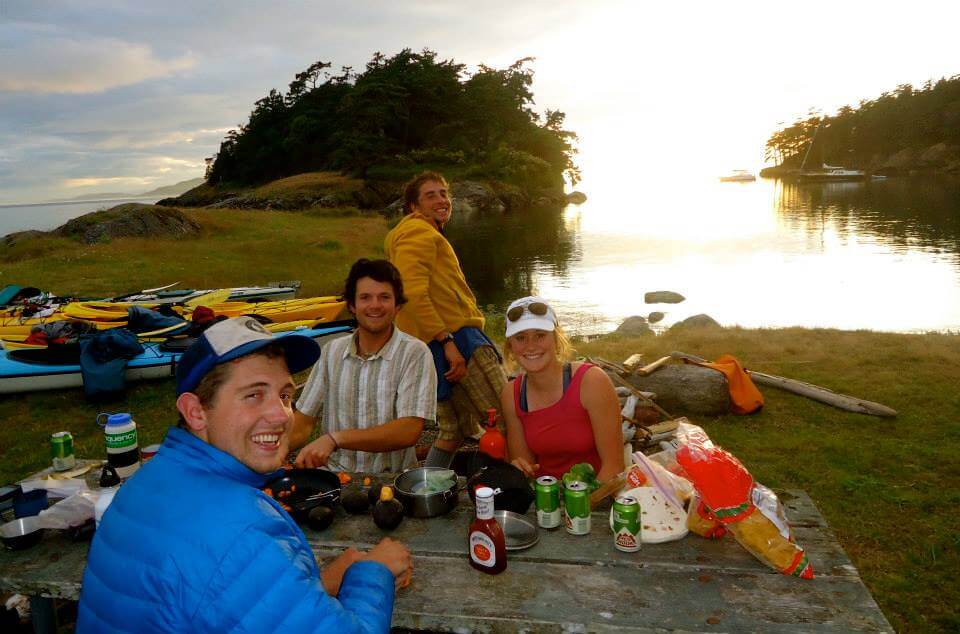
Sea kayaking is often thought of as a sport, but it is arguably both an art and science. The art can be found in the perfection of a paddle stroke, the finesse of a roll, and a smoothly carved turn. But science is absolutely essential for calculating the tides and currents, predicting the winds and weather, and putting it all together to determine the safest and most efficient times to cross between the islands. More science comes into play when we interpret the natural world, identify plants and animals, and investigate the connections that allow this ecosystem to thrive despite its nearness to metropolitan areas.
I feel fortunate to have the opportunity to kayak in the San Juan Islands and meet new people on our kayak tours. Like all of the guides at Sea Quest, I am following my passion to be outdoors, experience new adventures, promote the conservation of our natural environment, and do what I love every day.
This guest blog article was written by Amanda Grant, a talented first-year San Juan kayak guide.

